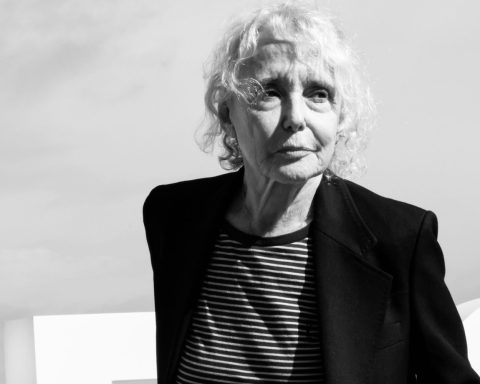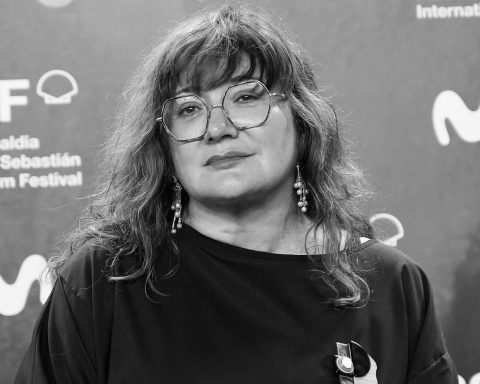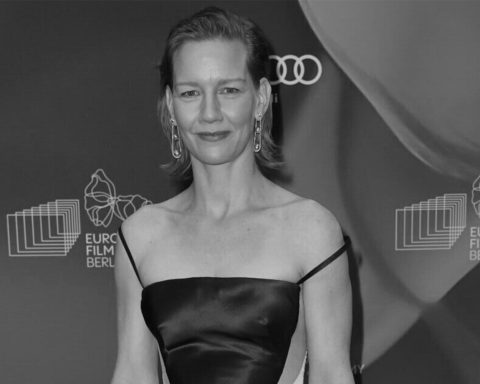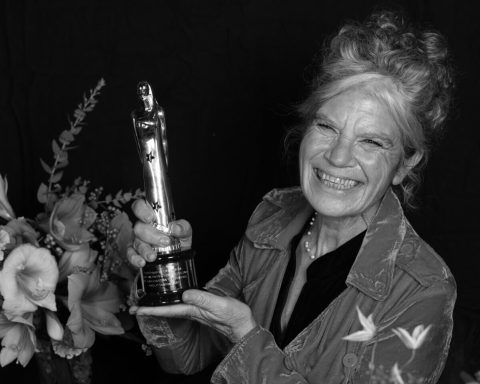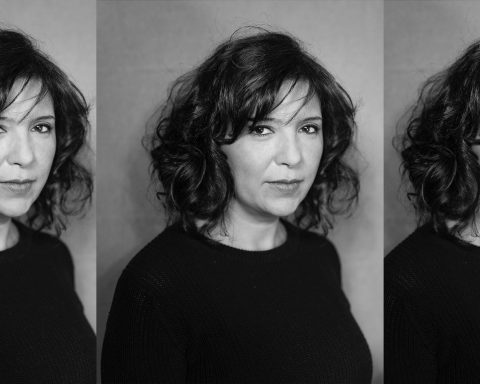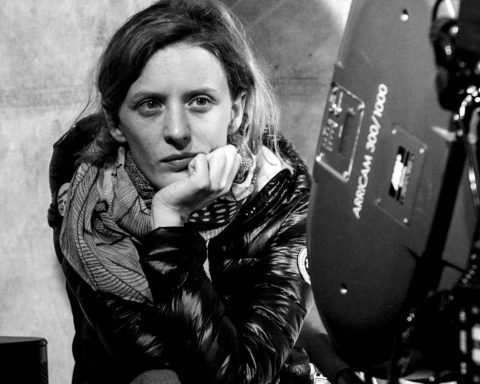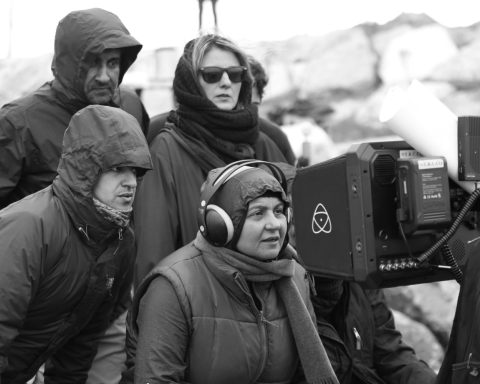Australian director Kitty Green follows up her critically acclaimed feature debut The Assistant with her sophomore film The Royal Hotel inspired by the feature documentary Hotel Coolgardie by Pete Gleeson, and starring Julia Garner, Jessica Henwick and Hugo Weaving, that follows American friends Hanna and Liv who, while on a backpacking trip in Australia, run out of money and take a temporary live-in job behind the bar of a pub called The Royal Hotel in a remote Outback mining town. The film premiered at the Telluride Film Festival before screening at the Toronto International Film Festival and vying for the Golden Shell at the 71st San Sebastian International Film Festival.
Just like in The Assistant, Green challenges gendered attitudes and behavior patterns in The Royal Hotel even if the settings differ. She questions where do women draw the line and stand up for themselves when they no longer feel safe in their environment and when is it OK to do something about it, “I guess it’s about spaces where I’ve been. Both movies are about being a woman in a space that’s maybe a little gendered. You can see that the men run that space or control that space. And it’s about trying to figure out when you’re allowed as a woman to speak up for yourself when you should say “No,” when you should point out your discomfort or how much you should tolerate, put up with, so that’s kind of interesting to me,” Green tells Fade to Her.
Green forces her audience to ask themselves whether the protagonists should leave the bar, whether they will leave the bar and why aren’t they leaving the bar. But the question is never the same throughout the film; it is always fluctuating, “I think as a woman in those spaces, you never really know what the right decision is. You never know if you feel if you’re paranoid. Am I paranoid or safe? Or, is this okay? This guy makes me feel uncomfortable, but he’s not actively violent. He’s just staring at me and it’s just thinking of going, ‘Is that a real threat?’ And when is that just in your head? That kind of confusion, that kind of state we’re all in, I think, constantly as women in the world is something I wanted to tap into,” she says.
Green also plays with the expectations of her audiences who anticipate more violence and bad things to happen to Hanna and Liv, but they never do. In that sense, she is also challenging the horror trope, always dancing on that fine line, “When you see the image of those two girls in backpacks in a regional setting or in the middle of nowhere, you automatically think that they’re going to be killed or something. And so, the idea that we don’t do that and that we instead just explore the threat of violence and the threat that it might escalate, to me, was really more interesting than seeing it play out on screen. I think we’ve seen enough violence,” Green explains.
How will the Australian male audiences react to her subversion of the genres and depiction of the drinking culture Down Under through the female gaze?
“We screened it a lot in Australia and so, I think it might be alright; we’ll see… You never know! Might be in trouble! But I feel like the Australians understand the place a little more. In fact, they’re more critical of Hanna in the beginning because she doesn’t accept it or take it into phase. Whereas they like Liv’s character who’s more chill and easygoing and friendly and so, it sort of plays differently in Australia, but I think it will still hopefully have an impact on people to chat about it,” Green argues.
In that sense, according to Green, the difference between Hanna and Liv is a natural dynamic when two friends are traveling together, “Liv is more accepting of the place and is learning a little about the culture and meeting people and chatting to people. I think that’s a more Australian kind of attitude. And Hanna’s sort of taking it a little more cautious, a little more careful… One of you has to look at the map, figure out how much money you have, to figure out how you’re gonna get home and that sort of happens when traveling in a pair,” she maintains.
The Royal Hotel is the second collaboration between Green and actress Julia Garner and Green sees this working relationship as “really beautiful.” It is a chemistry she is unable to characterize and explain, “When we met, we got along straight away and The Assistant was a very easy process. We understood each other. And then, this one was even easier. We had a few discussions early on about the script and the character and then we sort of saw it clicks and it works. She’s the body of the character, but I shoot the point of view of the character, so the two of us share the character,” Green says of this symbiosis.
Green gives prominence to the landscape in the film and uses it to ramp up the element of fear and lack of safety, “It’s a very claustrophobic space in a very vast space, so there’s something lovely about that juxtaposition in that the characters when they’re in that bar, it feels like there’s no oxygen in there. And they walk outside and there’s so much oxygen, but it doesn’t feel safe. It still feels threatening in its own way. Both spaces feel scary. It’s so remote, so isolated, that it all adds to the tension,” Green shares.
The character of Glenda is an interesting way of showing that not only women adhere to the Aussie drinking cult(ure), but that there are also women who are all too happy to enable and perpetuate this kind of behavior, “We didn’t want to make it’s all men. So, the problem isn’t men, the problem is the kind of culture, exactly the aggression associated with it. So, we wanted to show that there are women in that that are sort of propping it up and, but also, I think a lot of Australian women have had to put up with that. And that was their way to kind of find their way through, to survive themselves is to be a part of the culture and to laugh along with it as opposed to say no to it. So, sometimes, people have to make that choice,” Green posits.
But she feels that the reactions of today’s women are bolder, more attuned to the time we live in and different from those of women from past generations, “Women are more able to say no, and stand up for themselves in a way that I think my generation or one above me never did. So, it’s nice to see that happen. They’re kind of representing that shift where people can be more honest about what they accept and be more honest about their own discomfort in such situations,” she remarks.
According to Green, the situation of women in film today is getting better, “Even this year in Competition, it’s half women, half men, which is exciting. And I think each year it gets a little better. And the more we have conversations, the more we can keep challenging them to make changes, but we still clearly got a lot of work to do,” she says, speaking of the Official Competition at this year’s San Sebastian International Film Festival. Australia is also catching up, “I think everything’s shifting in a way. There’s not a big difference between the two,” she adds.
The ending of The Royal Hotel, that differs from that of the documentary, is more powerful in stark contrast to the original’s bleaker one. Green wanted to end her film with a bang and question with it whether the way to end endemic sexual harassment, domestic violence and violence against women is to burn the patriarchy to the ground, “I like that the ending is divisive. Some people like it, some people don’t. I think men get a bit angry at it sometimes because they almost want the girls to be attacked or there to be more violence to justify the ending. And the fact that the girls are just saying no, even though there’s no violence, they say no at the threat of violence to them – we want women to win in the end, champion them in the end,” she concludes.
Photo credits: © Festival de San Sebastián. Photo: Jorge Fuembuena.
This interview was conducted at the 2023 San Sebastian International Film Festival.

